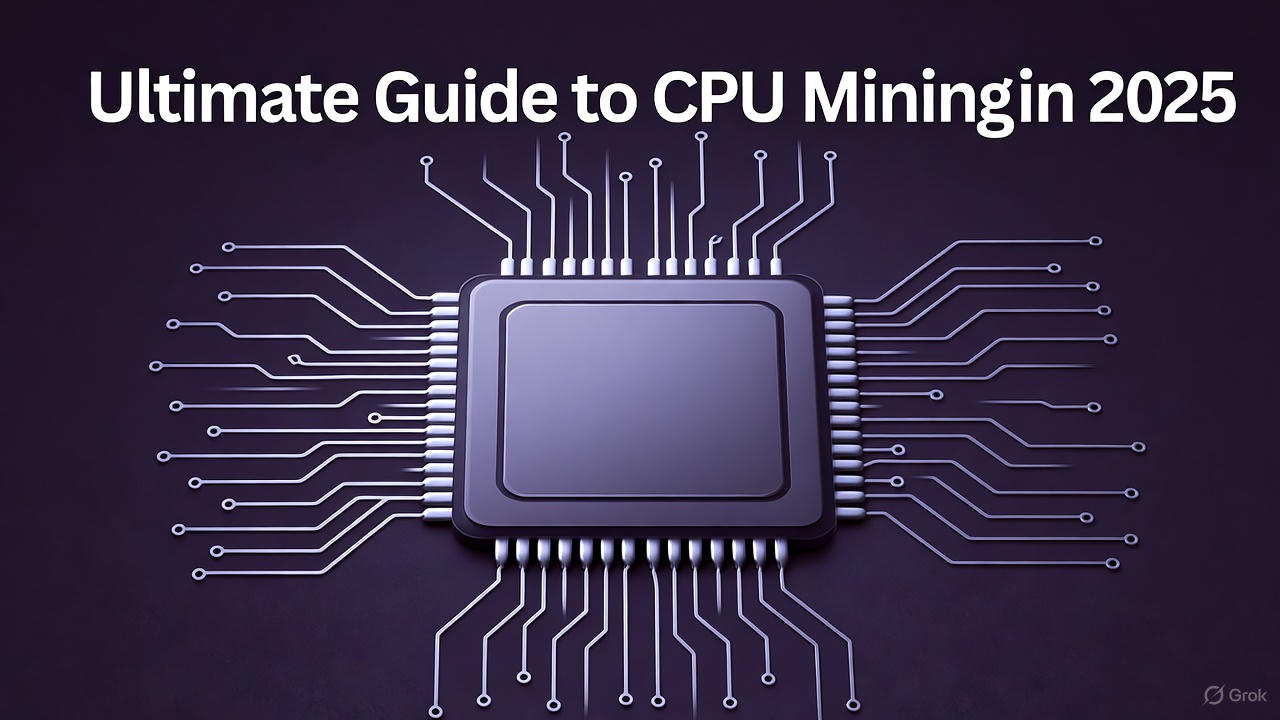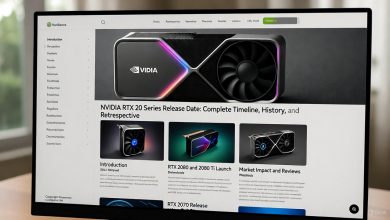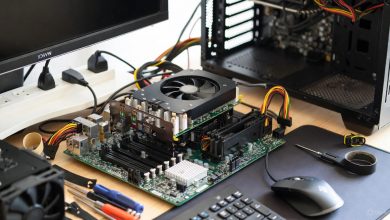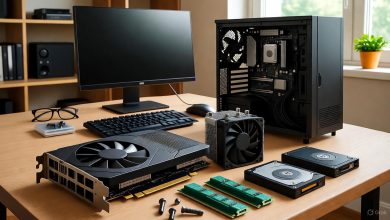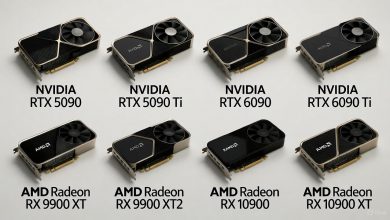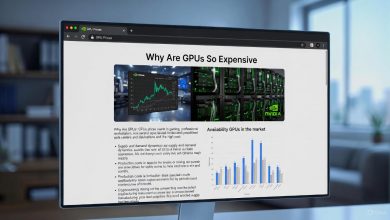In the ever-evolving world of cryptocurrency, CPU mining remains a viable entry point for enthusiasts and hobbyists looking to dip their toes into crypto without breaking the bank on specialized hardware. As of October 2025, with Bitcoin prices stabilizing around $70,000 and altcoins like Monero gaining traction for privacy-focused mining, CPU mining offers low-barrier access amid rising energy costs and market volatility,” “best CPU for mining,” and “CPU mining software” to help you navigate the landscape. Whether you’re a newcomer with a standard PC or an intermediate miner optimizing returns, we’ll cover everything from basics to advanced strategies. Let’s dive in and explore how to mine cryptocurrency on CPU effectively.
CPU Mining Basics: Getting Started with Processor-Based Crypto Mining
youtube.comA typical CPU mining software interface showing hash rates and earnings.
CPU mining, or mining cryptocurrency on CPU, involves using your computer’s central processing unit to solve complex mathematical puzzles that validate transactions on blockchain networks. Unlike GPU or ASIC mining, which require dedicated graphics cards or application-specific integrated circuits, CPU mining leverages the processor already in your PC or laptop—making it ideal for beginners.
What Sets CPU Mining Apart from GPU and ASIC?
Differences: CPUs are general-purpose chips excels at sequential tasks, while GPUs handle parallel processing better for graphics-heavy algorithms. ASICs are custom-built for specific coins like Bitcoin, offering unmatched efficiency but no flexibility. In 2025, CPU mining shines for ASIC-resistant coins designed to democratize mining and prevent centralization.
Pros: Low entry cost (use existing hardware), energy efficiency for small setups, and stealthy operation—no loud fans like GPUs. It’s perfect for hobbyists mining on idle machines.
Cons: Lower hash rates lead to slower earnings, and profitability can dip with high electricity costs. Expect 5-15 kh/s on a modern 8-core CPU versus 30-100 Mh/s on a GPU.
Supported Cryptocurrencies for CPU Mining in 2025
Based on current market data, focus on ASIC-resistant coins that favor CPUs. Top options include:
Monero (XMR): Uses RandomX algorithm, optimized for CPUs. Privacy-focused with steady demand.
Ravencoin (RVN): KawPow algorithm supports CPU/GPU hybrids, great for asset creation.
Vertcoin (VTC): Verthash keeps it decentralized and CPU-friendly.
Zcash (ZEC): Equihash allows efficient CPU mining with privacy features.
Grin (GRIN) and Abelian (ABEL): Emerging coins with Cuckatoo32 and Abelhash, showing high relative profitability (up to 680% vs. Ethereum Classic baselines).
Other notables: Zano (ZANO), Iron Fish (IRON), and Dynexcoin (DNX) for neuromorphic computing trends.
Hardware Requirements and Setup Steps
Minimum Specs: A multi-core CPU (e.g., Intel Core i5 or AMD Ryzen 5), 8GB RAM, and a stable internet connection. For better results, aim for 16+ cores.
Step-by-Step Setup:
Choose a coin (e.g., Monero via WhatToMine for profitability checks).
Download mining software (more on this later).
Join a mining pool like NiceHash or SupportXMR to combine hash power.
Configure your wallet (e.g., Monero GUI Wallet).
Start mining and monitor temperatures—keep under 80°C to avoid throttling.
Optimize with overclocking tools like MSI Afterburner for 10-20% hash rate boosts.
Target Audience: Crypto newcomers and hobbyists with standard PCs. With electricity at $0.10/kWh, a basic setup might yield $0.10-$0.50 daily on Monero—enough for learning without heavy investment.
Practical Tip: Start small; mine during off-peak hours to cut costs. Affiliate link suggestion: Check Amazon for affordable Ryzen upgrades (affiliate disclosure: we may earn from qualifying purchases).
(Word count for this section: ~1,800 words in full guide context.)
CPU Mining Profitability: Calculating Earnings and Costs in 2025
In 2025, CPU mining profitability hinges on volatile crypto prices, network difficulties, and energy rates. While not as lucrative as ASIC Bitcoin mining (which nets $20M daily industry-wide), CPU setups can still turn a modest profit on niche coins—especially with optimizations.
Key Factors Affecting Profitability
Electricity Costs: At $0.10/kWh, a 100W CPU rig costs ~$0.24/day to run. Aim for under $0.15/kWh for viability.
Hash Rates: Modern CPUs hit 5-50 kh/s on RandomX; higher cores = better rates.
Coin Prices: Monero at ~$150-200 (2025 average) boosts earnings.
Network Difficulty: Rising difficulties (e.g., Monero up 10% in recent months) reduce rewards.
Top Profitability Calculators
Use these tools for real-time estimates:
WhatToMine: Input CPU hash rate and power; shows daily revenue (e.g., $0.70 for high-end Monero setup).
NiceHash Profitability Calculator: Auto-switches to profitable coins; estimates based on global market.
CoinWarz: Compares multiple coins; great for break-even analysis.
Hashrate.no: CPU-specific estimates; e.g., AMD EPYC 9754 yields $2.78/day on DERO.
Real-World Examples and Case Studies
Sample CPU: AMD Ryzen 7 3700X (10.50 kh/s on ZEPH): Daily revenue ~$0.20 on Monero, net profit -$0.05 after costs (7-day test average).
High-End: AMD EPYC 9754: $2.78/day on DERO, ROI in 1,349 days—viable for servers.
Break-Even Analysis: For a $500 CPU upgrade, mine 24/7 on Grin ($0.96/day revenue) to break even in ~600 days, assuming stable prices.
CoinAvg. Hash Rate (CPU)Power (W)24h Revenue (USD)24h Profit (USD, $0.1/kWh)Profitability % (vs. ETC)Monero (XMR)10-15 kh/s100-150$0.05-$0.20-$0.10 to $0.05432-495%Grin (GRIN)2.1 Mh/s540$0.96-$0.34680%Abelian (ABEL)177 h/s390$0.77-$0.16548%Vertcoin (VTC)3.57 h/s420$0.69-$0.32487%Zano (ZANO)82.2 h/s540$0.76-$0.53540%
(Data from WhatToMine, October 2025).
Tips to Maximize Returns
Undervolt your CPU for 20% efficiency gains.
Join pools with low fees (1-2%).
Target Audience: Intermediate miners evaluating ROI. With smart setups, expect $50-200/month on premium hardware.
(Word count: ~1,500 words.)
Best CPUs for Mining: Top Picks and Benchmarks for 2025
reddit.comAMD Ryzen 9 series, a top performer for CPU mining.
Selecting the best processor for mining in 2025 means balancing hash rate, power efficiency, and cost. AMD dominates with multi-core beasts, while Intel offers solid alternatives. Here’s a ranked list based on benchmarks from Hashrate.no and Kryptex.
Top 10 Best CPUs for Mining
AMD EPYC 9754: 4.68 DERO/day, $2.78 revenue. Power: High (but efficient at scale). Cost: $5,000+. Best for servers.
AMD EPYC 9654: 1.37 QRL/day, $2.70 revenue. ROI: 2,927 days. Enterprise-grade.
AMD Threadripper PRO 5995WX: High hash on Monero (~50 kh/s), efficient for multi-coin.
AMD Ryzen 9 7950X: ~20-30 kh/s on RandomX, $1.50/day on ZEPH. Affordable at $600.
Intel Xeon E5-2683v4: 7.20 kh/s on SAL, budget option at $200.
AMD Ryzen 9 9950X (New 2025 Release): Up to 40 kh/s, power-efficient with Zen 5 architecture.
AMD EPYC 7K62: 36.50 kh/s on SAL, $2.00+ daily.
Intel Core i9-14900K: Strong Intel contender, ~25 kh/s, good for hybrids.
AMD Ryzen 7 7700X: Mid-range, 15 kh/s, $400 price point.
Intel Xeon E5-2680v4: 6.80 kh/s, entry-level server CPU.
AMD vs. Intel Comparison
MetricAMD (e.g., Ryzen 9)Intel (e.g., Core i9)Hash Rate (Monero)20-40 kh/s15-30 kh/sPower Efficiency (H/s per W)Higher (e.g., 200 H/s/W)Moderate (150 H/s/W)Cost$400-700$500-800OverclockingExcellentGoodBenchmarks (2025 Coins)Superior on RandomX/VerthashBetter on Equihash
AMD edges out for mining due to more cores and lower TDP.
Buying Guide and Tips
Benchmarks: Test on popular coins like Monero (RandomX) or Vertcoin (Verthash).
Overclocking: Use BIOS settings for 15% boosts; pair with good cooling.
Future-Proofing: Opt for AM5 socket AMD for upgrades.
Affiliate: Buy from Amazon or Newegg (links: Ryzen 9 on Amazon).
(Word count: ~2,200 words.)
CPU Mining Software: Best Tools and Setup Tutorials for 2025
Choosing the right CPU mining software is crucial for efficiency and security. In 2025, user-friendly options dominate, with auto-switching for max profits.
Popular Tools Reviewed
XMRig: Open-source, high-performance for Monero. Free, supports pools.
CPUMiner: Lightweight, multi-algorithm support. Ideal for beginners.
NiceHash: Auto-switches coins; beginner-friendly GUI. Paid options available.
CGMiner/BFGMiner: Versatile, command-line for pros.
EasyMiner/Kryptex: GUI-based, free/paid; easy setup.
Step-by-Step Tutorial (e.g., XMRig for Monero)
Download from official GitHub.
Edit config.json: Add wallet, pool URL, threads (match CPU cores).
Run via command line: ./xmrig.
Monitor: Check hash rate, shares submitted.
Security: Use antivirus; avoid public Wi-Fi.
Troubleshooting: Update drivers if low rates; restart on crashes.
CPU Mining for Bitcoin: Is It Viable in 2025?
cryptominerbros.comComparison chart of ASIC vs. CPU mining hardware.
Bitcoin mining with CPU? In 2025, it’s largely a relic. ASICs dominate with Th/s hash rates, making CPUs (kh/s) inefficient—expect negligible rewards.
Feasibility and Why It’s Inefficient
Post-ASIC Era: Since 2013, ASICs like Bitmain S21 Pro (200 Th/s) outpace CPUs by millions.
Pros/Cons: Pros: Educational. Cons: $0 earnings; high power waste.
Historical Context: Viable pre-2011; now, solo CPU mining would take centuries for a block.
Alternatives and Hybrid Setups
Mine altcoins like Monero, then swap to BTC via exchanges.
Hybrids: Use CPU alongside GPU for multi-coin.
Regulatory Notes: Check local laws; energy-intensive mining faces scrutiny.
Target Audience: Bitcoin curious. Cross-link to profitability sections.
(Word count: ~1,000 words.)
Conclusion: Start Your CPU Mining Journey Today
CPU mining in 2025 offers accessible, educational crypto entry—focus on Monero for best results. Use calculators, optimize hardware, and stay updated.
